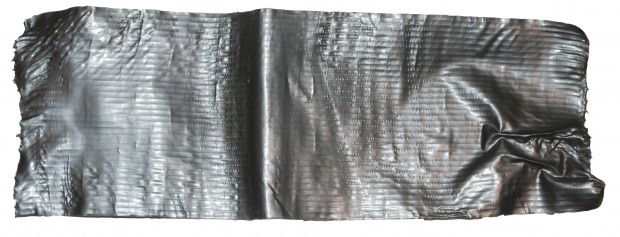My friend Ryan Baxter and I are hiking southward up the A.T. Trail on the north side of Mt. Rogers headed towards the Old Orchard Shelter where we plan to stop for lunch. Our hope was to power up a little bit given we are both an embarrassing bit out of shape (shhh, don’t tell anybody), before making the bigger hike up the mountainside to the sweeping boulder fields that occupy the higher altitudes of the Mt. Rogers high country.
I’m packing a traditional PB&J and a power bar, but Ryan’s got something else up his sleeve.
“Prepare to have your mind blown,” Ryan chuckles as he begins digging through his pack for his lunch at the shelter. “Remember that surprise I was telling you about?”
He pulls out what looks like a small yellow sake choko and an 8oz plastic bottle full of clear fluid (presumably sake). Unfortunately there was no sake in that bottle, but there was something close in resemblance. Alcohol.

I knew what he was up to because I had previously been reading up on small DIY survival rigs, although I’ve never made one, and had seen similar set-ups to what Ryan was about to reveal. While I had seen similar set-ups, I hadn’t seen one particularly like this. It was a homemade lightweight alcohol stove crafted out of an aluminum soda bottle. The bottle was machine-pressed into itself giving it a nice rounded rim with near pinhole sized air vents drilled into the side—all in all a much more well-crafted version of what some know as the Fancy Feast stove.
Using an old Snow Peak cook pot as a cooking dish as well as a carrying container, Ryan was able to squeeze the bottle of denatured alcohol, the stove, and the windscreen all into the small pot. Minimal size and weighing next to nothing, it’s proven addition to any minimalist backpackers collection.
Ryan lit up the stove and got water to boil so he could amaze me with his grand finale, but while doing so an elderly A.T. veteran named Sam wandered up with a couple hiking friends and took interest in Ryan’s contraption.
“Did you make that?” Sam eyeballed the stove with curiosity before one-upping Ryan with his own homemade stove.
Sam pulled out a very similar cup-shaped stove, only with the walls hollowed out to allow a tightly wound wick to be placed inside for better burn efficiency, and a stainless steel air vent built into it. The two of them marveled the craftsmanship and exchanged stories, clearly sharing a bit of enthusiastic appreciation for innovation, while I stood by observing their creations and enjoying my own personal and latest innovation of adding jalapeño jam to my peanut butter and jelly sandwiches.

But my lunch was about to get better. Ryan had a large plastic bag of dried ramen noodles with dried mushrooms and seaweed and spices just waiting to be doused in hot water in order to spring to savory life. The bag was placed inside a curious looking sleeve crafted out of pipe insulation and duct tape.
Step One: Boil water.
Step Two: Pour water into bag.
Step Three: Sit around and shoot the bull until lunch is ready.
The thermal bag could hold enough heat inside to cook for up to eight to ten minutes, even in freezing temperatures, allowing for minimum fuel consumption.
After finishing Step Three we began Step Four, which involved me getting a share of the gruel, which I wasn’t about to argue with, I happened to know Ryan was pretty well rounded in the kitchen (you should have been at camp that night for the camp-style chicken alfredo—I’ll be thinking about that for days).

While eating lunch conversation drifted into sleeping gear which led to hammocks which led to Sam showing off one more piece of gear before we departed on the rest of our trip.
Clearly a man of patience, Sam had crafted a hammock for less than $15 that rivaled many I’ve seen on store shelves selling for 50 bucks, not to mention rivaling most other DIY hammocks I’ve seen in quality.

Using two layers of rip-stop nylon, some excellent sewing skills, a custom buckle machined by a friend, and a crafty suspension cord utilizing Chinese-finger-trap technology, Sam had put together an excellent two-layer hammock allowing for a pad to be inserted inside for insulation and comfort while a custom sleeping bag with an open bottom end and straps instead of zippers is wrapped around the outside for cover and warmth. Optional: bug netting and tarp.
Sam quickly slung it up between two trees and allowed me to indulge, but I had to quickly climb out for fear of A: falling into an afternoon snooze, and B: developing a jealousy complex.
So we bid the guys adieu and hit the trail, moving onward up the mountain to seek out adventure. But on the way up I couldn’t help daydreaming about little contraptions I wanted to build to add to my pack. As cheesy as it sounds, I guess old dogs can teach new tricks as well as learn them.
Here’s a couple links you should check out if you’d like to work some quality hands-on time into your schedule:








